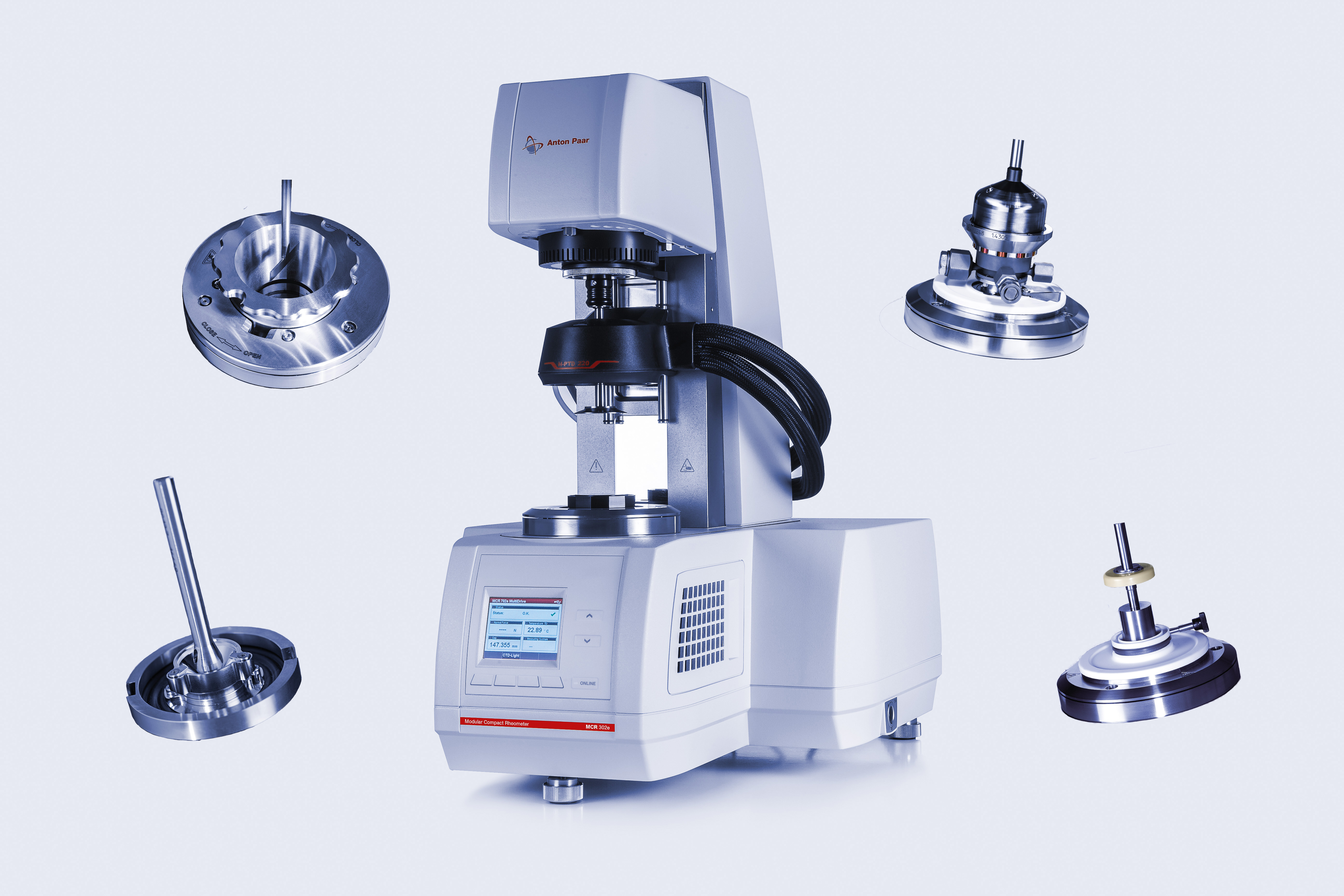Measurements are performed at four different levels
1.Compressibility and permeability
With an MCR rheometer and an additional powder flow cell, the compressibility and permeability of protein powders can be analyzed and compared to, for example, conventional milk protein. The measurements show that vegetable protein powders have a higher compressibility than conventional milk protein powders, which means that their flow behavior is less ideal. A similar situation exists concerning the air permeability of the compressed powder bed: The examined vegetable protein powders are less permeable than conventional milk powders, which may be an indication of less solubility and also lumping. These differences between vegetable and animal proteins may impact the texture of vegan products.
1.Solubility and viscosity
How do we obtain a meat analog product from these proteins? Meat is composed of different fibers and these need to be ‘recreated’ for example with dissolved powder. This powder is heated and pressed through a tempered pipe, which causes it to form fiber-like structures. The entire extrusion process can be simulated using an Anton Paar rheometer. In this step, proteins are dissolved, for example in water, and then analyzed using a starch cell at specific temperatures. The result: When the temperature rises, the viscosity of the protein solutions decreases; when it is cooled again, the viscosity rises. If a denaturation – a structural change in the biomolecules – of the proteins occurs, the viscosity rises during heating and also during the cooling process. Knowledge about the connection between temperature and viscosity is fundamental for the composition and design of the extrusion process, and therefore also for the texture of the final meat analog products.
3.Taste and mouthfeel
For the analysis of taste and mouthfeel – the most important parameters – oscillatory and tribological measurements are used. These simulate texture as well as friction, for example the friction between tongue and palate during eating.
4.Characteristics of the final product
Real meat becomes significantly harder during the roasting process, while vegan meat analogs are only slighty harder after roasting, and roasting the vegan turkey in the same way as the “real” turkey will result in different texture. Precise and dynamic temperature control with a Peltier device is required to set a temperature profile that simulates the roasting process.












